
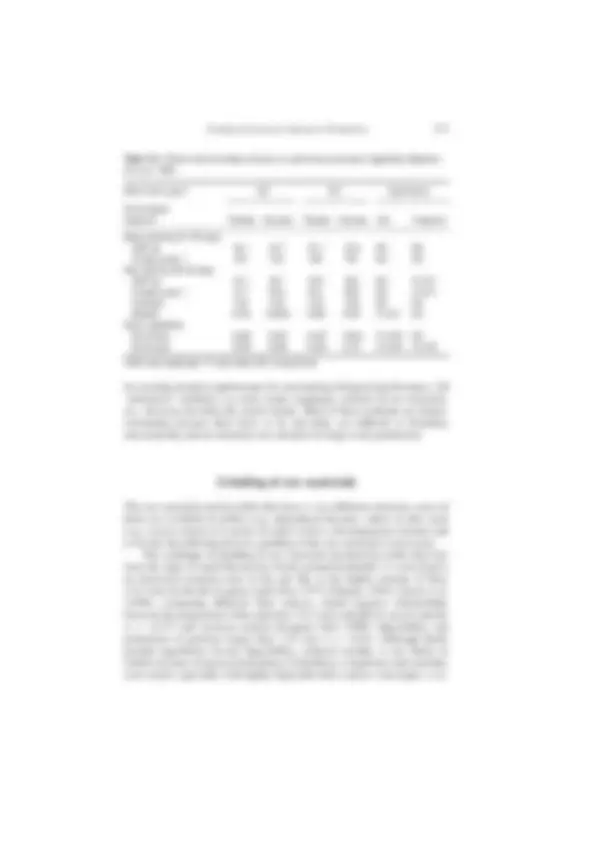
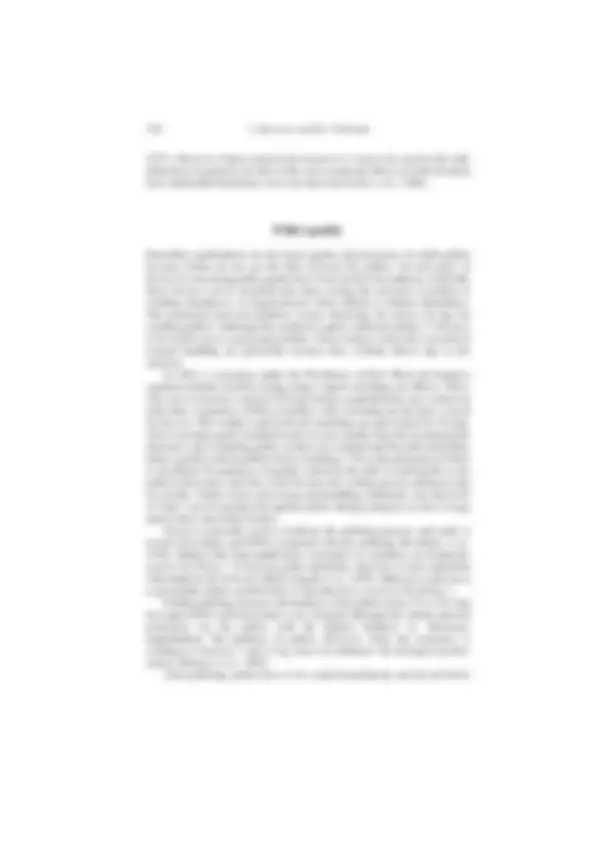
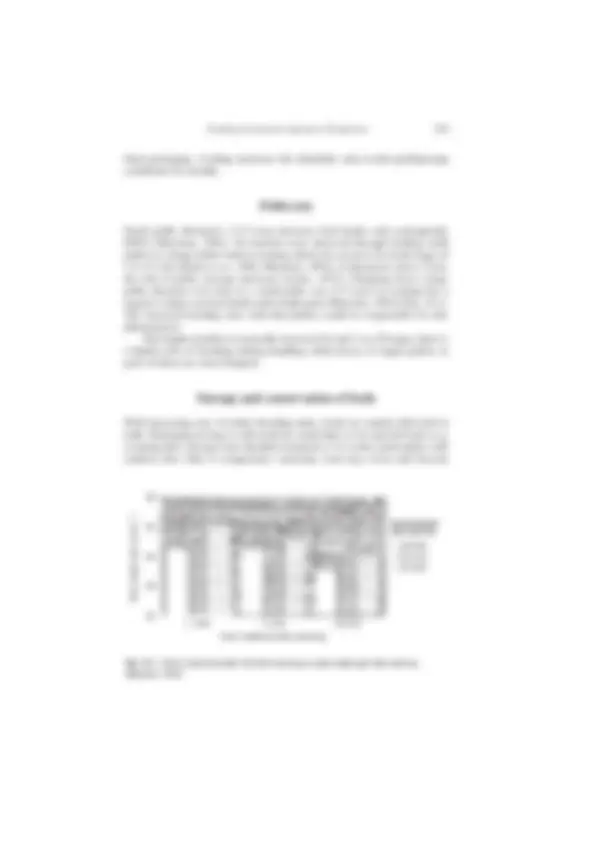
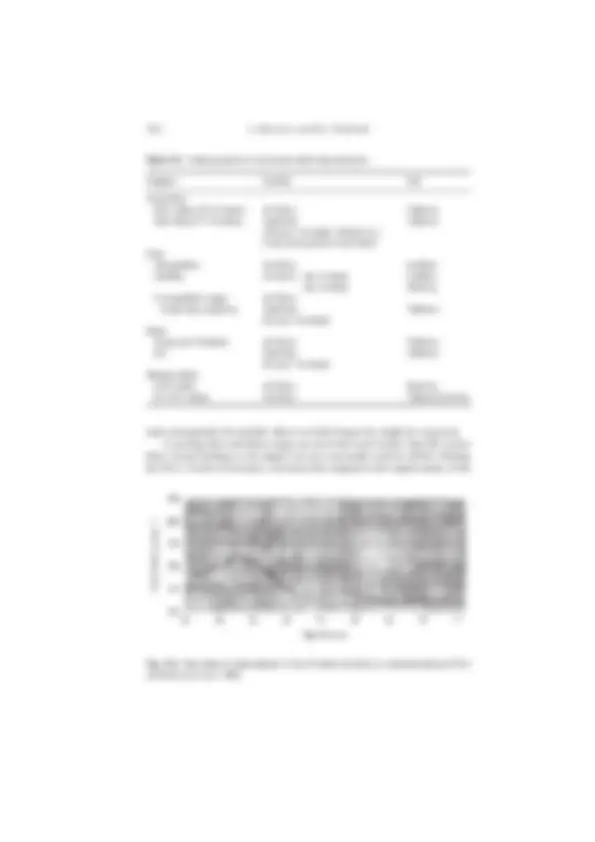
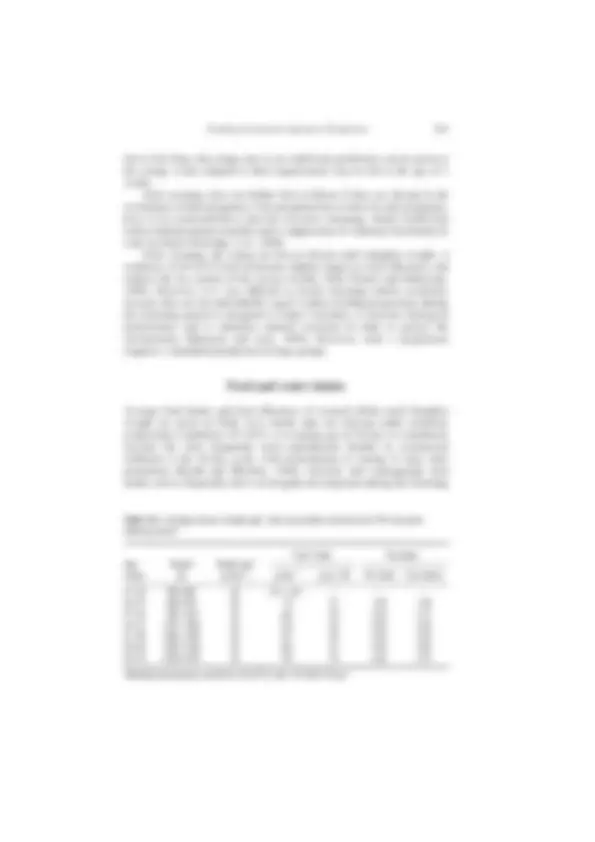
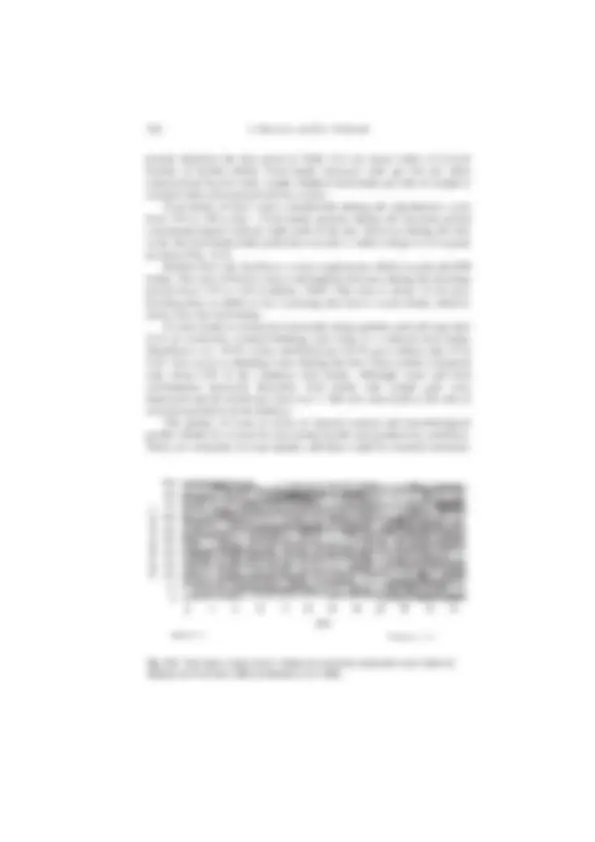
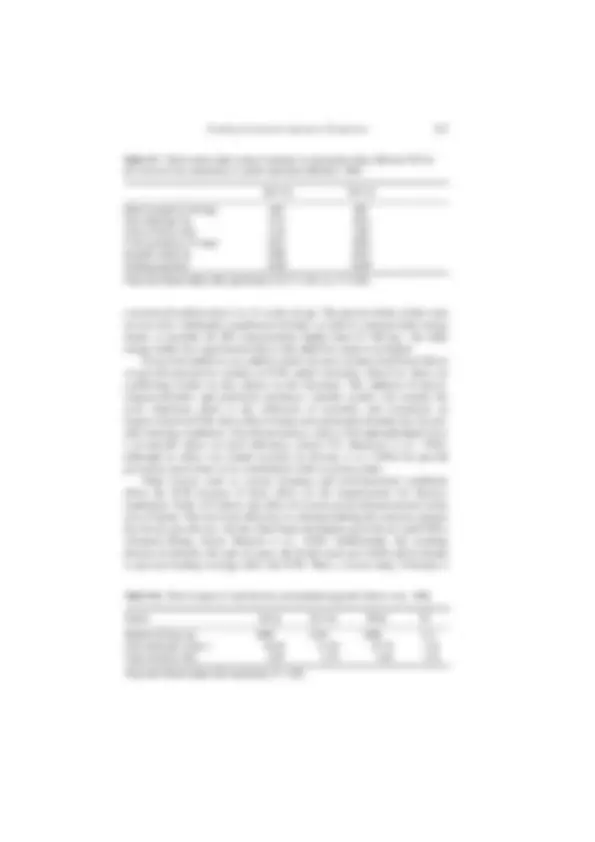
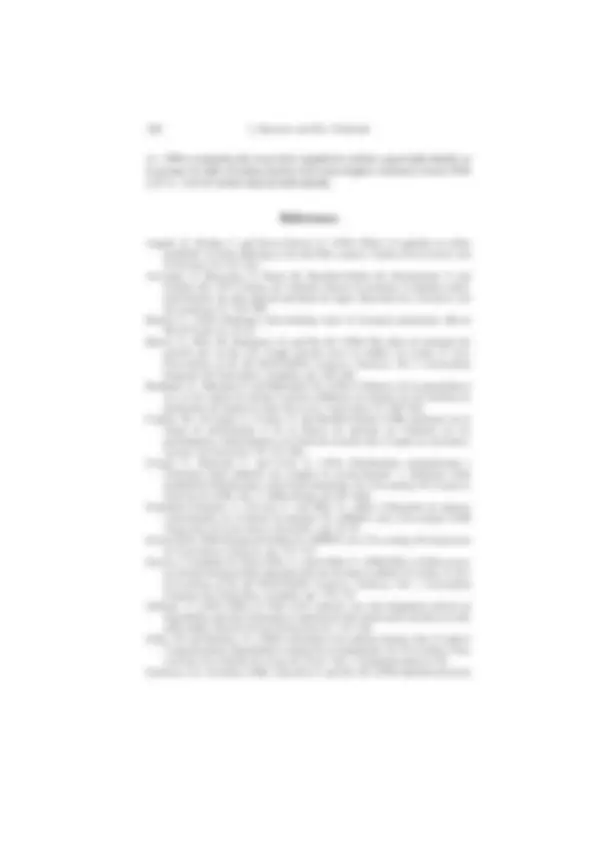
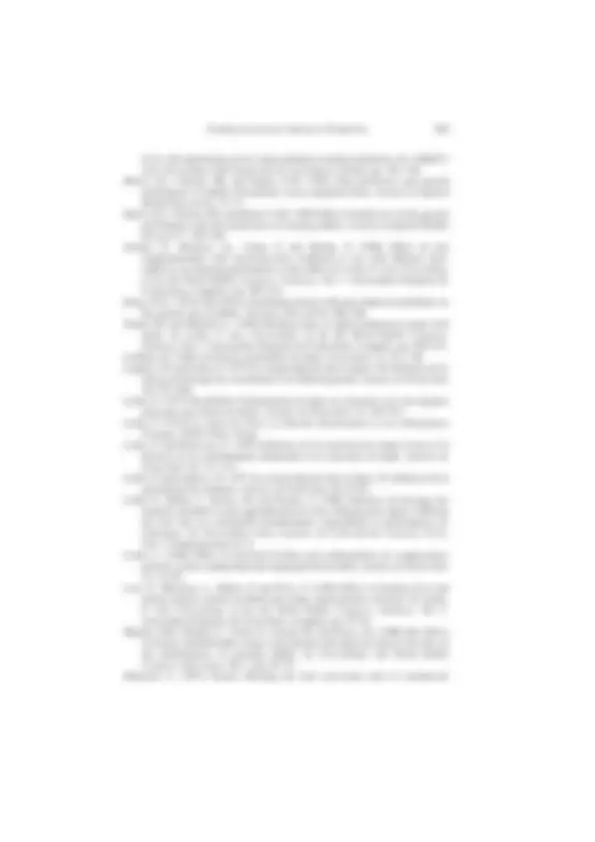



Estude fácil! Tem muito documento disponível na Docsity

Ganhe pontos ajudando outros esrudantes ou compre um plano Premium


Prepare-se para as provas
Estude fácil! Tem muito documento disponível na Docsity
Prepare-se para as provas com trabalhos de outros alunos como você, aqui na Docsity
Os melhores documentos à venda: Trabalhos de alunos formados
Prepare-se com as videoaulas e exercícios resolvidos criados a partir da grade da sua Universidade
Responda perguntas de provas passadas e avalie sua preparação.

Ganhe pontos para baixar
Ganhe pontos ajudando outros esrudantes ou compre um plano Premium
Comunidade
Peça ajuda à comunidade e tire suas dúvidas relacionadas ao estudo
Descubra as melhores universidades em seu país de acordo com os usuários da Docsity
Guias grátis
Baixe gratuitamente nossos guias de estudo, métodos para diminuir a ansiedade, dicas de TCC preparadas pelos professores da Docsity
Este documento discute sobre as dietas concentradas pelletizadas para coelhos, sua preferência pelas mesmas, e os efeitos dessas dietas na produção e no desempenho de coelhos crescendo. Além disso, aborda a importância da homogeneidade da mistura e do processo de pelletização, assim como a duração dos pellets e o tamanho ideal de pellets. O documento também discute sobre a importância da qualidade da água e dos efeitos de diferentes fatores, como a temperatura e a composição dos raçãoes, na eficiência alimentar.
Tipologia: Notas de estudo
1 / 18

Esta página não é visível na pré-visualização
Não perca as partes importantes!











255
© CAB INTERNATIONAL 1998.The Nutrition of the Rabbit (eds C. de Blas and J. Wiseman)
(^1) Agricultural Research Centre–Ghent, Rijksstation voor Kleinveeteelt, Burg.
Van Gansberghelaan 92, 9820 Merelbeke, Belgium; 2 Departamento de Producción Animal, Universidad Politécnica de Madrid, 28040 Madrid, Spain
In intensive rabbit production dried and ground raw materials are used to prepare balanced compound diets. These concentrated diets are generally pelleted because rabbits show a strong preference for pellets over the same diet in meal or mash form. The processing costs for pelleting rabbit diets are more than compensated for by a number of benefits. Significantly lower amounts are consumed on meal diets, resulting in lower daily weight gain (DWG), inferior feed conversion ratio (FCR) and also lower slaughter yield (Table 14.1). It has even been shown that the circadian cycle of feed intake is disturbed when meal diets are fed (Lebas and Laplace, 1977). When offered a
Table 14.1. Effect of diet presentation on the performances of growing rabbits (as a percentage of pellet).
Reference Presentation form DWG DFI FCR
Lebas (1973) Pellet = 100 = 100 = 100 Meal 87 83 106 King (1974) Pellet = 100 = 100 = 100 Meal 93 90 103 Machinet al. (1980) Pellet = 100 = 100 = 100 Meal 98 80 123 Mash (0.40 water) 75 84 89 Candauet al. (1986) Pellet = 100 = 100 = 100 Meal 60 75 123 Sánchezet al. (1984) Pellet = 100 = 100 = 100 Meal 64 52 279
DWG, daily weight gain; DFI, daily feed intake; FCR, feed conversion ratio.
256 L. Maertens and M.J. Villamide
choice between meal and pellet form, 0.97 of total feed intake was of the pelleted diet (Harris et al ., 1983). Other benefits of pelleting are comparable with those for other animals: segregation or selection between the different raw materials is impossible, higher amounts of by-products can be fed and feed wastage is minimal. Pellets further reduce dust problems in the rabbitry and automatic or semi- automatic rabbit feeders work much more easily than with meal or mash. Several studies have been undertaken with other forms of presentation. When a limited number of raw materials are mixed and supplied, rabbits select those raw materials according to their palatability. As a result of this unbalanced intake, performance deteriorates (Schlolaut, 1995). When the cereals and the protein sources were covered with molasses, rabbits were less able to sort between the different dietary components (Goby and Rochon, 1990). Compared with a commercial pelleted diet, weight gains of fatteners were similar on the meal diet. However, the FCR was unfavourable due to the high wastage of feed (Sánchez et al., 1984; Goby and Rochon, 1990). With lower cereal prices, efforts have been made to feed high amounts of whole grains together with a concentrated pellet. Rommers et al. (1996) compared pellets with a mixture of 0.85 pellets and 0.15 of wheat or barley for fatteners. The biological performance was not significantly different. However, the cereals accumulated in the feeders because the rabbits showed preference for the pellets. Because wastage of feed was not observed, mainly due to the construction of the feeders, it was concluded that a mixture of pellets and grains could reduce feeding costs. However, attention has to be paid to the need to avoid feed wastage and to feed a homogeneous mixture. In addition, combinations of a concentrate (pellet or cereals) and fresh vegetable materials can be fed. However, a significantly reduced daily dry matter (DM) intake is obtained even when feedstuffs with a high palatability such as roots, cabbage or even grass silage were fed, resulting in 20–40% decreased DWG (Partridge et al ., 1985). Recently, Maertens and Luzi (1995) compared pelleted with extruded presentation. The purpose was to try to modify starch hydrolysis of maize- based diets by extrusion and consequently improve ileal digestibility. Performances before or after weaning were not positively influenced by extrusion (Table 14.2). The decreased DWG could probably be related to the degradation of the protein quality due to the high temperature during extrusion. However, the intended higher starch digestibility was not obtained and consequently extrusion failed to reduce the mortality rate of the high starch containing diet. Similarly, Fernández-Carmona et al. (1993) obtained lower intake and growth rate and a great variability in FCR when rabbits from 18 to 42 days of age were fed an extruded diet as opposed to the pelleted diet. The authors explained these inferior results by the lower quality of the pellets of the extruded diet (lower durability and hardness). In intensive rabbit meat production, a pelleted balanced diet is the basis
258 L. Maertens and M.J. Villamide
1977). However, when commercial screens (2–7 mm) were used in the mill, differences in particle size due to this were small and effects on both retention time and health disturbance were not detected (Lebas et al ., 1986).
Durability and hardness are the major quality characteristics of rabbit pellets because rabbits do not eat the fines between the pellets. Several types of device for measuring pellet quality have been used by the industry. Generally these devices can be classified into those testing the resistance of pellets to crushing (hardness), or fragmentation when rubbed or shaken (durability). The pneumatic-powered hardness testers determine the power (in kg) for crushing pellets. Although this method is quick, sufficient pellets (>10) have to be tested to give a good repeatability. Testers using a motor drive instead of manual handling are preferable because they exclude effects due to the operator. In 1962, a committee under the Presidency of Prof. Phost developed a standard method of pellet testing using a square tumbling can (Phost, 1963). The can is rotated at a speed of 50 rpm using a perpendicular axis centred on both sides. A quantity of 500 g of pellets, after screening out the fines, is used for the test. The sample is placed in the tumbling can and rotated for 10 min. After screening again (standard mesh size just smaller than the nominal pellet diameter), the remaining pellets or fines are weighed and the pellet durability index (g pellets after/g pellets before tumbling × 10) or the proportion of fines is calculated. For purposes of quality control in the mill, it is preferable to test pellets before they enter the cooler because the cooling process influences the test results. Under correct processing and handling conditions, less than 0. of ‘fines’ may be produced in quality pellets during transport, in silos or bags and in tubes and rabbit feeders. Steam is generally used to facilitate the pelleting process and tends to favour feed intake and DWG compared with dry pelleting (Bombeke et al ., 1978). Binders like lignosulphonates, bentonites or sepiolites are frequently used at 10–20 kg t –1^ to increase pellet durability; their use is more important when high levels of fat are added (Angulo et al ., 1995). Molasses is known as a good pellet binder and therefore is introduced at a level of 40–60 kg t –^. Double pelleting increases the hardness of the pellets (from 5.5 to 10.3 kg) but equal DWG and feed intake were obtained although the rabbits showed preference for the pellets with the highest hardness (L. Maertens, unpublished). The hardness of pellets, however, when the resistance to crushing is between 7 and 13 kg, does not influence the biological perfor- mance (Morisse et al ., 1985). After pelleting, pellets have to be cooled immediately and sieved before
Feeding Systems for Intensive Production 259
final packaging. Cooling increases the durability and avoids predisposing conditions for moulds.
Small pellet diameters (<2.5 mm) decrease feed intake and consequently DWG (Maertens, 1994). No benefits were observed through feeding small pellets to young rabbits before weaning. Ideal size seems to be in the range of 3.5–4.5 mm (Harris et al ., 1984; Maertens, 1994). At diameters above 5 mm, the risk of pellet wastage increases (Lebas, 1975). Changing from a large pellet diameter (4.8 mm) to a small pellet size (2.5 mm) at weaning has a negative impact on feed intake and weight gain (Maertens, 1994) (Fig. 14.1). The increased feeding time with thin pellets could be responsible for this phenomenon. The length of pellets is normally between 0.8 and 1 cm. If longer, there is a higher risk of breaking during handling while losses of single pellets or parts of them are more frequent.
With increasing size of rabbit breeding units, feeds are mainly delivered in bulk. Packaging in bags is still used for small units or for special feeds (e.g. weaning diet). Storage time should be limited to 3–4 weeks, particularly with outdoor silos. Due to temperature variations, feed may sweat and become
Daily weight gain (g day
) −^1 Negative effect 20%
Positive effect
Fig. 14.1. Effect of pellet diameter fed before weaning on daily weight gain after weaning (Maertens, 1994).
Feeding Systems for Intensive Production 261
In commercial rabbitries, as a rule, rabbits are fed on an ad libitum basis. This is not only for practical considerations but because of the rapid reproductive rate and the adjustment of the voluntary feed intake in response to changes in dietary energy concentration. However, some categories are fed on a restricted basis to prevent excessive fattening. In Table 14.3, a feeding scheme for commercial rabbit meat production is presented. For young does, the feeding regime depends to a large extent on the age of the first desired mating. Although common agreement exists in the literature that ad libitum feeding together with early mating (0.75–0.80 of adult weight) leads to favourable results in obtaining a first litter (Maertens and Okerman, 1987), in practice it is recommended to restrict young does and to postpone the first mating until the age of 17 weeks. This leads to a longer reproductive life and a lower replacement rate of does (M. Baumier, personal communication). A flushing of 5 days prior to mating or insemination leads to oestrus synchronization and high pregnancy rates (Van der Broeck and Lampo, 1979), and greater number of follicles (Gosalvez et al ., 1994). Males increase their voluntary feed intake until the age of 5 months (Fig. 14.3). Afterwards, feed intake drops by about 30% or a natural feed restriction takes place. In comparison with restricted-fed litter mates (0.20–0.25 of ad libitum ), libido or semen characteristics were not negatively influenced by ad libitum feeding (Luzi et al ., 1996). Feed restriction of males is therefore not recommended. However, males from a heavy line frequently show sore hocks in wire mesh cages; feed restriction reduces their adult weight by about 0.5 kg
Fatteners
(a)
2 – 4 weeks
(b)
0 – 2 weeks
4 – 6 weeks
Maternity
Does in pre- gestation Young females
0.66 0.^
Fig. 14.2. Distribution of feed consumption in a rabbitry using a 42 day reproduction cycle, artificial insemination and weaning at 30 days. (a) Closed farm; (b) fattening unit.
262 L. Maertens and M.J. Villamide
Table 14.3. Feeding scheme for commercial rabbit meat production.
Category Quantity Diet
Young does Early mating (15–16 weeks) Ad libitum Fatteners Late mating (17–18 weeks) Restricted Fatteners (35 g kg –1^ live weight, followed by a 4 day flushing before insemination) Does Late gestation Ad libitum Lactation Lactating Ad libitum : kits <3 weeks Lactation Ad libitum : kits >3 weeks Weaning In pre-gestation cages Ad libitum except early pregnancy Restricted Fatteners 35 g kg –1^ live weight Males Young (until 18 weeks) Ad libitum Fatteners Old Restricted Fatteners 35 g kg –1^ live weight Weaned rabbits 3–6/7 weeks Ad libitum Weaning 6/7–10/11 weeks Ad libitum Fatteners/finishing
Ad libitum
Restricted fed
**+ + + +
+
++ ++ ++ ++ Feed intake (g day
) −^1
Fig. 14.3. Feed intake of males between 17 and 47 weeksad libitum vs. restricted feeding (0.75 of ad libitum) (Luziet al., 1996).
and consequently favourable effects on their longevity might be expected. Lactating does and their young eat out of the same feeder. Specific starter diets (creep feeding) as for piglets are not commonly used in rabbits. During the first 3 weeks of lactation, a lactation diet adapted to the requirements of the
264 L. Maertens and M.J. Villamide
period, therefore the data given in Table 14.4 are mean values of several batches of hybrid rabbits. Feed intake increases with age but not when expressed per kg live body weight. Highest feed intake per unit of weight is reached when maximal growth rate occurs. Feed intake of does varies considerably during the reproductive cycle from 150 to 450 g day –1. Feed intake patterns during the lactation period correspond largely with the milk yield of the doe. However during the first week, the feed intake/milk yield ratio exceeds 2, while it drops to 1.6 at peak lactation (Fig. 14.4). Rabbits fed a dry feed have a water requirement which exceeds the DM intake. The ratio of feed to water consumption increases during the fattening period from 1.55 to 1.65 (Laffolay, 1985). This ratio is about 1.9 for non- lactating does or adults at rest. Lactating does have a water intake which is about twice the feed intake. If water intake is restricted, feed intake drops quickly and will stop after 24 h of restriction. Limited drinking time leads to a reduced feed intake (Prud’hon et al ., 1975). Lebas and Delaveau (1975) gave rabbits only 0.5 h 24 h –1^ free access to drinking water. During the first 2 days rabbits consumed only about 0.50 of the voluntary feed intake. Although water and feed consumption increased thereafter, feed intake and weight gain were depressed and the feed/water ratio was 1. This low ratio leads to the risk of excretion problems in the kidneys. The quality of water in terms of mineral content and microbiological profile should be revised for preventing health and productivity problems. There are variations in water quality and there could be external contamin-
Feed intake (g day
) −^1
n n +
Weaning
PP-cycle
42-day cycle
Fig. 14.4. Feed intake of does (hybrid, multiparous) during their reproduction cycle. Data from Maertens and De Groote (1988) and Maertenset al. (1988).
Feeding Systems for Intensive Production 265
ation from dung collectors, crop areas with high organic or nitrogen fertilization, etc. Filtration through resin is recommended to lower high levels of nitrate. In the rabbitry water contamination could come from inefficient cleaning of tanks, pipes and drinkers. Thus, the first and most important treatment of water should be the cleanliness of water equipment. Moreover, chlorination of drinking water (10 mg chloride l–1) is a simple and cheap way of decreasing the bacterial concentration. Table 14.5 shows the effect of cleanliness of water equipment, containing about six times lower bacteria count, and chloride treatment that eliminates the bacteria contamination. Chlorine also removes slime and algae build-up in water lines, which often blocks the drinkers, and eliminates harmful elements such as nitrites, iron, manganese and sulphur through precipitation or by converting them to less harmful components such as nitrites to nitrates (Berriot, 1992). Acidification of water with acetic acid is another common treatment for preventing enteritis, however water pH seems to have little effect on gut pH, because it has to cross the stomach with a pH of 2. With high doses of acetic acid (0.5– 1 ml l –1) (pH about 5), pathogenic bacteria are almost completely eliminated and the rabbits drink freely.
FCR is the most extensively used parameter for estimation of feed efficiency in intensive systems. In practical situations, different calculations can be used according to the final objective. Thus, the technical FCR usually used in research work does not take into account the feed consumed by culled rabbits
Table 14.5. Effect of cleanliness of water equipment and treatment on level of contamination (García, 1984).
Untreated water Chlorine-treated water
In tanks Acceptable level Dirty tank Dirty tank Clean tank
Total bacteria count (col ml –1^ ) 200 7,600 1,300 0 Total coliform count (col 100 ml –1^ ) Nil 1,200 ,200 0 TotalE. coli (col 100 ml –1^ ) Nil ,13 ,1 0 TotalS.fecalis (col 100 ml –1^ ) Nil ,26 ,5 0
Acceptable Dirty Dirty Clean In drinkers (pan pot type) level equipment equipment equipment
Total bacteria count (col ml –1^ ) 200 22,000 4,000 80 Total coliform count (col 100 ml –1^ ) 10 1,400 ,100 2 TotalE. coli (col 100 ml –1^ ) 0 ,380 ,50 0 TotalS.fecalis (col 100 ml –1^ ) 10 1,300 ,400 3
Feeding Systems for Intensive Production 267
commercial rabbits from 4 to 11 weeks of age. The precise limits of this ratio are not clear. Although a regulation of intake, to achieve constant daily energy intake, is possible for DE concentrations higher than 9.3 MJ kg–1, the daily energy intake for experimental diets with added fat tends to be higher. Some feed additives are added to diets because of their beneficial effects on growth parameters mainly on FCR and/or mortality. However, there are conflicting results on this subject in the literature. The addition of fructo- oligosaccharides and probiotics produces variable results, but usually the most important effect is the reduction of mortality and sometimes an improvement in FCR, these effects being more pronounced under less favour- able housing conditions. Growth promoters, such as flavophospholipol, have a favourable effect on feed efficiency (about 5%; Maertens et al ., 1992), although no effect was found recently by Jerome et al. (1996) for growth promoters used alone or in combination with oxytetracycline. Other factors such as season, housing and environmental conditions affect the FCR because of their effect on the requirements for thermo- regulation. Table 14.8 shows the effect of season on growth parameters in the east of Spain. The best feed efficiency is obtained during the summer, despite the lowest growth rate. On the other hand, the highest growth rate and FCR is obtained during winter (Ramon et al ., 1996). Additionally, the stocking density of animals, the type of cages, the feeder space per rabbit and its design to prevent feeding wastage affect the FCR. Thus, a recent study (Taboada et
Table 14.7. Effect of strain (after 2 years of selection for reproductive traits, DWG and FCR for dam and sire lines, respectively) on growth parameters (Maertens, 1992).
Dam line Sire line
Weaning weight (g, 28 days) 642 a^582 b Daily weight gain (g) 37.6 A^ 46.6 B Feed conversion ratio 3.18 A^ 2.86 B Finishing weight (g, 70 days) 2221 A^2539 B Slaughter weight (g) 2358 A^2812 B Dressing proportion 0.625 A^ 0.606 B
Rows with different letters differ significantly (A, B,P < 0.01; a, b,P < 0.05).
Table 14.8. Effect of season on feed efficiency and postweaning growth (Ramonet al., 1996).
Season Spring Summer Winter SE Weight at 63 days (g) 2298 b^2134 a^2356 c^ 17. Daily weight gain (g day –1^ ) 45.64 b^ 41.62 a^ 47.72 c^ 0. Feed conversion ratio 2.93 b^ 2.70 a^ 3.08 c^ 0. Rows with different letters differ significantly (P < 0.05).
268 L. Maertens and M.J. Villamide
al ., 1996) comparing the same diets supplied to rabbits caged individually or in groups of eight (stocking density four times higher) obtained a better FCR (2.8 vs. 3.0) for rabbits housed individually.
Angulo, E., Brufau, J. and Esteve-García, E. (1995) Effect of sepiolite on pellet durability in feeds differing in fat and fibre content. Animal Feed Science and Technology 53, 233–241. Auvergne, A., Bouyssou, T., Pairet, M., Bouillier-Oudot, M., Ruckebusch, Y. and Candau, M. (1977) Nature de l’aliment, finesse de mouture et données anato- fonctionelles du tube digestif proximal du lapin. Reproduction, Nutrition and Development 27, 755–768. Berriot, C. (1992) Problems with drinking water in livestock production. Misset World Poultry 8, 25–27. Blasco, A., Piles, M., Rodriguez, E. and Pla, M. (1996) The effect of selection for growth rate on the live weight growth curve in rabbits. In: Lebas, F. (ed.) Proceedings of the 6th World Rabbit Congress , Toulouse , Vol. 2. Association Française de Cuniculture, Lempdes, pp. 245–248. Bombeke, A., Okerman, F. and Moermans, R. (1978) L’influence de la granulation à sec et à la vapeur de rations à teneurs différents en énergie sur les résultats de production des lapins de chair. Revue de l’Agriculture 31, 945–955. Candau, M., Auvergne, A., Comes, F. and Bouillier-Oudot (1986) Influence de la forme de présentation et de la finesse de mouture de l’aliment sur les performances zootechniques et la fonction caecale chez le lapin en croissance. Annales de Zootechnie 35, 373–386. Cavani, C., Bianconi, L. and Urrai, G. (1991) Distributione automatizzata e frazionata degli alimenti nel coniglio in accrescimento: 1. Influenza della modalità di distribuzione e del livello alimentare. In: Proceedings IX Congresso National de ASPA , Vol. 2. ASPA, Rome, pp. 857–864. Fernández-Carmona, J., Cervera, C. and Blas, E. (1983) Utilización de piensos extrusionados en el destete de gazapos. In: ASESCU (ed.) Proceedings XVIII Symposium de Cunicultura, Granollers , pp. 55–57. García, H.R. (1984) El agua de bebida. In: ASESCU (ed.) Proceedings IX Symposium de Cunicultura , Figueras , pp. 147–153. García, J., Carabaño, R., Perez Alba., L. and de Blas, C. (1996) Effect of fibre source on neutral detergent fibre digestion and caecal traits in rabbits. In: Lebas, F. (ed.) Proceedings of the 6th World Rabbit Congress, Toulouse , Vol. 1. Association Française de Cuniculture, Lempdes, pp. 175–179. Gidenne, T. (1992) Effect of fibre level, particle size and adaptation period on digestibility and rate of passage as measured at the ileum and in the faeces in the adult rabbit. British Journal of Nutrition 67, 133–146. Goby, J.P. and Rochon, J.J. (1990) Utilisation d’un aliment fermier chez le lapin à l’engraissement: digestibilité et impact du tri alimentaire. In: Proceedings 5ème Journées de la Recherche Cunicole , Paris , Vol. 2. Communication no. 62. Gosalvez, L.F., Alvariño, J.M.R., Estavillo, S. and Tor, M. (1994) Adelanto del incio
270 L. Maertens and M.J. Villamide
rabbits. Paper presented at the Conference of the Belgium Branch of the WRSA, Ghent, 10 November. Maertens, L. (1992) Selection scheme, performance level and comparative test of two lines of meat rabbits. Journal of Applied Rabbit Research 15, 206–212. Maertens, L. (1994) Influence du diamètre du granulé sur les performances des lapereaux avant et après sevrage. In: Proceedings 6ème Journées de la Recherche Cunicole , La Rochelle , Vol. 2. pp. 325–332. Maertens, L. and De Groote, G. (1987) Quelques caractéristiques spécifiques de l’alimentation des lapins. Revue de I’Agriculture 40, 1185–1203. Maertens, L. and De Groote, G. (1988) The influence of the dietary energy content on the performances of post-partum breeding does. In: Proceedings of the 4th World Rabbit Congress , Budapest , Vol. 3. Sandor Holdas, Hercegalom, pp. 42–53. Maertens, L. and Luzi, F. (1995) The effect of extrusion in diets with different starch levels on the performance and digestibility of young rabbits. 9. Arbeitstagung über Haltung und Krankheiten der Kaninchen, Pelztiere und Heimtiere. Celle. Deutsche Vet. Medizinische Gesellschaft e. V., Giessen , pp. 131–138. Maertens, L. and Luzi, F. (1996) Effect of dietary dilution on the performance and N- excretion of growing rabbits. In: Lebas, F. (ed.) Proceedings of the 6th World Rabbit Congress, Toulouse , Vol. 1. Association Française de Cuniculture, Lempdes, pp. 237–241. Maertens, L. and Luzi, F. (1997) Reduction of N-excretion of growing rabbits using phase feeding. 10. Arbeitstagung über Haltung und Krankheiten der Kaninchen, Pelztiere und Heimtiere. Celle. Deutsche Vet. Medizinische Gesellschafte e. V., Giessen , pp. 136–142. Maertens, L. and Okerman, F. (1987) L’influence de la méthode d’élevage sur les performances des jeunes lapines. Revue de l’Agriculture 40, 1171–1183. Maertens, L., Vermeulen, A. and De Groote, G. (1988) Effect of post-partum breeding and litter management on the performances of hybrid does. In: Proceedings of the 4th World Rabbit Congress, Budapest, Vol. 1. Sandar Holdas, Hercegalom, pp. 141–150. Maertens, L., Moermans, R. and De Groote, G. (1992) Flavomycin for early weaned rabbits: response of dose on zootechnical performances – effect on nutrient digestibility. Journal of Applied Rabbit Research 15, 1270–1277. Morisse, J.P., Maurice, R. and Boilletot, E. (1985) La dureté du granulé chez le lapin. Cuniculture 12, 267–269. Partridge, G., Allan, S.J. and Findlay, M. (1985) Studies on the nutritive value of roots, cabbage and grass silage for growing commercial rabbits. Animal Feed Science and Technology 13, 299–311. Partridge, G., Daniels, Y. and Fordyce, R. (1986) The effects of energy intake during pregnancy in doe rabbits on pup birth weight, milk output and maternal body composition change in the ensuing lactation. Journal of Agricultural Science Cambridge 107, 679–708. Perrier, G. and Ouhayoun, J. (1996) Growth and carcass traits of the rabbit. A comparative study of three modes of feed rationing during fattening. In: Lebas, F. (ed.) Proceedings of the 6th World Rabbit Congress, Toulous e, Vol. 3. Association Française de Cuniculture, Lempdes, pp. 225–232. Phost, H.B. (1963) Testing the durability of pelleted feed. Feedstuffs 35 (13), 66–68. Prud’hon, M., Cherubin, M., Carles, Y. and Goussopoulos, J. (1975) Effets de
Feeding Systems for Intensive Production 271
différents niveaux de restriction hydrique sur l’ingestion d’aliments solides par le lapin. Annales de Zootechnie 24, 299–310. Ramon, J., Gomez, E.A., Perucho, O., Rafel, O. and Baselga, M. (1996) Feed efficiency and postweaning growth of several Spanish selected lines. In: Lebas, F. (ed.) Proceedings of the 6th World Rabbit Congress, Toulouse , Vol. 2. Association Française de Cuniculture, Lempdes, pp. 351–353. Rommers, J.M., Meijerhof, G, Van Someren and Kranenburg, M. (1996) Effect van het bijvoeren van granen aan vleeskonijnen. NOK Kontaktblad 14, 88–94. Sánchez, W.K., Cheeke, P.R. and Patton, N.M. (1984) The use of chopped alfalfa rations with varying levels of molasses for weanling rabbits. Journal of Applied Rabbit Research 7, 13–16. Schlolaut, W. (1995) Das gro β e Buch vom Kaninchen. DGL-Verlag, Frankfurt am Main, pp. 219–226. Taboada, E., Mendez, J. and De Blas, J.C. (1996) The response of highly productive rabbits to dietary sulphur amino acid content for reproduction and growth. Reproduction, Nutrition and Development 36, 191–203. Van der Broeck, L. and Lampo, P. (1979) Influence de l’âge au premier accouplement sur la fertilité de jeunes lapines et leurs performances en première portée. Annales de Zootechnie 28, 443–452.